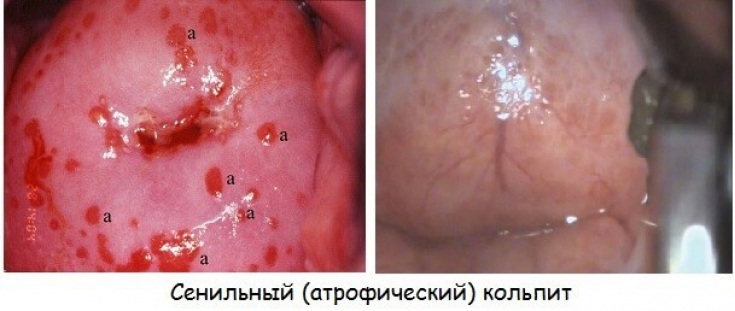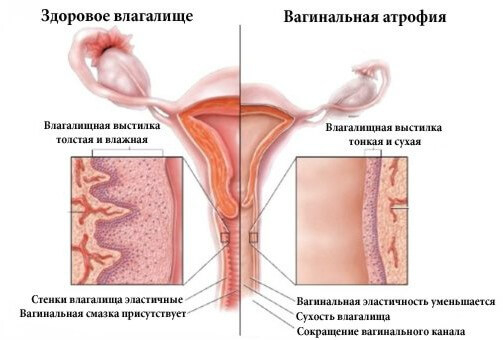Atrophic colpitis implies thinning of the vaginal epithelium, which leads to a cascade of unpleasant symptoms and serious consequences. Synonyms of disease – vulvovaginal atrophy, senile vaginitis, genitourinary menopausal syndrome. More often, the disease manifests itself at 5 or 6 years after the onset of menopause and appears due to a decrease in estrogen levels. According to statistics, only 58% of menopausal women feel the symptoms of genitourinary menopausal syndrome, of which 25% seek medical advice. Diagnosis and treatment of atrophic colpitis in women – important components for achieving a stable remission of the disease and improving the prognosis of recovery. On estet-portal.com read about modern approaches to therapy
- Peculiarities of laboratory and instrumental diagnostics in atrophic colpitis
- Contraindications for estrogen replacement therapy
- Treatment of atrophic colpitis in women: main directions
- Systemic hormone replacement therapy
Peculiarities of laboratory and instrumental diagnostics in atrophic colpitis
Hypoestrogenism leads to atrophy of the cells of the epithelial layer of the vagina, changes in the acidity and dryness of the walls. These factors sharply increase the risk of injury and infection of the organ. Objective diagnosis of the disease begins with a detailed history taking, which helps to establish the manifesting symptoms of the clinical picture. But in order to correctly prescribe the treatment of atrophic colpitis and verify the diagnosis, this is not enough. They resort to instrumental diagnostics by conducting:
- gynecological examination with speculums;
- extended colposcopy.
Natural rejuvenation of the skin of the intimate area in the postmenopausal periodbonds
Contraindications for estrogen replacement therapy

Hormone replacement therapy should be used with great caution in female smokers.
Sustained increase in blood pressure, increased blood clotting, tendency to thrombosis, pronounced varicose veins, the presence of an oncological process of any organ and / or mammary gland – the main contraindications to which the gynecologist pays attention before starting therapy.
Severe autoimmune and hepatic pathologies, allergy to medications of this pharmacological group, heavy and/or frequent uterine bleeding – complement the specified list.
Read the most interesting articles in Telegram!
Treatment of atrophic colpitis in women: main directions

Treatment of atrophic colpitis in women requires hormone replacement therapy. This is the only way to provide assistance that has proven to be effective. The principles of therapy are as follows:
- prescribe natural estrogens;
- drug dosage is kept at minimal but effective levels;
- begin hormone replacement therapy five years after the onset of sustained menopause;
- self-medication and uncontrolled medication are excluded.
locally and systemically. Medications with estriol (suppositories, gels, ointments) are used intravaginally. They improve the condition of the vaginal mucosa, removing unpleasant symptoms and excessive dryness of the walls, and improve the quality of sexual life.
This type of therapy allows you to abandon the "peak" concentration of estradiol in the blood, does not have a systemic effect and is indicated for patients with severe somatic diseases.
Fever Again: Vasomotor Symptoms During Menopauses
Administration of systemic hormone replacement therapy
Oral hormone replacement therapy, as a result of its high bioavailability, additionally acts as a preventive measure for atherosclerosis and arterial hypertension. Hormonal treatment is carried out for a long time (1.5 & ndash; 5 years), although positive changes are noticeable after 3 & ndash; 6 months from the start of therapy.If senile colpitis occurs in parallel with urinary incontinence, the appointment of uroseptics is indicated.
The disease can be treated with phytoestrogens – preparations containing plant estrogen. Such medicines are made in the form of a syrup, an elixir. The composition includes rose hips, cedar seed, hawthorn, coriander, chaga, chamomile. They are distinguished by estrogen-like and anti-climacteric effects, facilitating the course of the disease.
"Dry problem": genitourinary syndrome of menopause







Add a comment